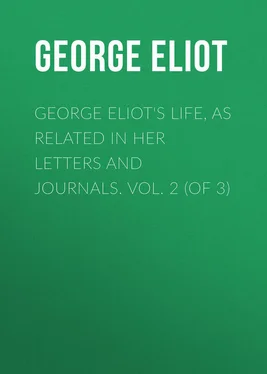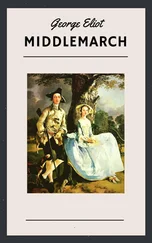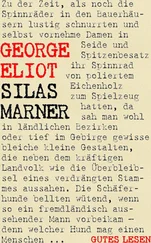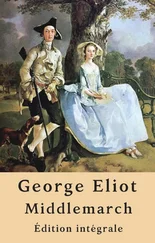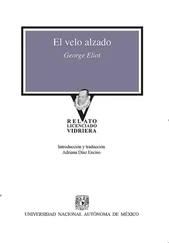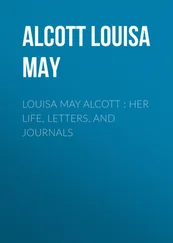George Eliot - George Eliot's Life, as Related in Her Letters and Journals. Vol. 2 (of 3)
Здесь есть возможность читать онлайн «George Eliot - George Eliot's Life, as Related in Her Letters and Journals. Vol. 2 (of 3)» — ознакомительный отрывок электронной книги совершенно бесплатно, а после прочтения отрывка купить полную версию. В некоторых случаях можно слушать аудио, скачать через торрент в формате fb2 и присутствует краткое содержание. Издательство: Иностранный паблик, Жанр: literature_19, foreign_antique, foreign_prose, на английском языке. Описание произведения, (предисловие) а так же отзывы посетителей доступны на портале библиотеки ЛибКат.
- Название:George Eliot's Life, as Related in Her Letters and Journals. Vol. 2 (of 3)
- Автор:
- Издательство:Иностранный паблик
- Жанр:
- Год:неизвестен
- ISBN:нет данных
- Рейтинг книги:3 / 5. Голосов: 1
-
Избранное:Добавить в избранное
- Отзывы:
-
Ваша оценка:
- 60
- 1
- 2
- 3
- 4
- 5
George Eliot's Life, as Related in Her Letters and Journals. Vol. 2 (of 3): краткое содержание, описание и аннотация
Предлагаем к чтению аннотацию, описание, краткое содержание или предисловие (зависит от того, что написал сам автор книги «George Eliot's Life, as Related in Her Letters and Journals. Vol. 2 (of 3)»). Если вы не нашли необходимую информацию о книге — напишите в комментариях, мы постараемся отыскать её.
George Eliot's Life, as Related in Her Letters and Journals. Vol. 2 (of 3) — читать онлайн ознакомительный отрывок
Ниже представлен текст книги, разбитый по страницам. Система сохранения места последней прочитанной страницы, позволяет с удобством читать онлайн бесплатно книгу «George Eliot's Life, as Related in Her Letters and Journals. Vol. 2 (of 3)», без необходимости каждый раз заново искать на чём Вы остановились. Поставьте закладку, и сможете в любой момент перейти на страницу, на которой закончили чтение.
Интервал:
Закладка:
The balcony window is the secondary charm of the Nürnberg houses; it would be the principal charm of any houses that had not the Nürnberg roofs and gables. It is usually in the centre of the building, on the first floor, and is ornamented with carved stone or wood, which supports it after the fashion of a bracket. In several of these windows we saw pretty family groups – young fair heads of girls or of little children, with now and then an older head surmounting them. One can fancy that these windows are the pet places for family joys – that papa seats himself there when he comes home from the warehouse, and the little ones cluster round him in no time. But the glory of the Nürnberg houses is the roofs, which are no blank surface of mere tiling, but are alive with lights and shadows, cast by varied and beautiful lines of windows and pinnacles and arched openings. The plainest roof in Nürnberg has its little windows lifting themselves up like eyelids, and almost everywhere one sees the pretty hexagonal tiles. But the better houses have a central, open sort of pavilion in the roof, with a pinnacle surmounted by a weathercock. This pavilion has usually a beautifully carved arched opening in front, set off by the dark background which is left by the absence of glass. One fancies the old Nürnbergers must have gone up to these pavilions to smoke in the summer and autumn days. There is usually a brood of small windows round this central ornament, often elegantly arched and carved. A wonderful sight it makes to see a series of such roofs surmounting the tall, delicate-colored houses. They are always high-pitched, of course, and the color of the tiles was usually of a bright red. I think one of the most charming vistas we saw was the Adler-Gasse, on the St. Lorenz side of the town. Sometimes, instead of the high-pitched roof, with its pavilion and windows, there is a richly ornamented gable fronting the street; and still more frequently we get the gables at right angles with the street at a break in the line of houses.
Coming back from the Burg we met a detachment of soldiers, with their band playing, followed by a stream of listening people; and then we reached the market-place, just at the point where stands "The Beautiful Fountain" – an exquisite bit of florid Gothic which has been restored in perfect conformity with the original. Right before us stood the Frauen-Kirche, with its fine and unusual façade , the chief beauty being a central chapel used as the choir, and added by Adam Krafft. It is something of the shape of a mitre, and forms a beautiful gradation of ascent towards the summit of façade . We heard the organ and were tempted to enter, for this is the one Catholic Church in Nürnberg. The delicious sound of the organ and voices drew us farther and farther in among the standing people, and we stayed there I don't know how long, till the music ceased. How the music warmed one's heart! I loved the good people about me, even to the soldier who stood with his back to us, giving us a full view of his close-cropped head, with its pale yellowish hair standing up in bristles on the crown, as if his hat had acted like a forcing-pot. Then there was a little baby in a close-fitting cap on its little round head, looking round with bright black eyes as it sucked its bit of bread. Such a funny little complete face – rich brown complexion and miniature Roman nose. And then its mother lifted it up that it might see the rose-decked altar, where the priests were standing. How music, that stirs all one's devout emotions, blends everything into harmony – makes one feel part of one whole which one loves all alike, losing the sense of a separate self. Nothing could be more wretched as art than the painted St. Veronica opposite me, holding out the sad face on her miraculous handkerchief. Yet it touched me deeply; and the thought of the Man of Sorrows seemed a very close thing – not a faint hearsay.
We saw Albert Dürer's statue by Rauch, and Albert Dürer's house – a striking bit of old building, rich dark-brown, with a truncated gable and two wooden galleries running along the gable end. My best wishes and thanks to the artists who keep it in repair and use it for their meetings. The vistas from the bridges across the muddy Pegnitz, which runs through the town, are all quaint and picturesque; and it was here that we saw some of the shabbiest -looking houses – almost the only houses that carried any suggestion of poverty, and even here it was doubtful. The town has an air of cleanliness and well-being, and one longs to call one of those balconied apartments one's own home, with their flower-pots, clean glass, clean curtains, and transparencies turning their white backs to the street. It is pleasant to think there is such a place in the world where many people pass peaceful lives.
On arriving at Munich, after much rambling, we found an advertisement of "Zwei elegant möblirte Zimmer," No. 15 Luitpold Strasse; and to our immense satisfaction found something that looked like cleanliness and comfort. The bargain was soon made – twenty florins per month. So here we came last Tuesday, the 13th April. We have been taking sips of the Glyptothek and the two Pinacotheks in the morning, not having settled to work yet. Last night we went to the opera – Fra Diavolo – at the Hof-Theatre. The theatre ugly, the singing bad. Still, the orchestra was good, and the charming music made itself felt in spite of German throats. On Sunday, the 11th, we went to the Pinacothek, straight into the glorious Rubens Saal. Delighted afresh in the picture of "Samson and Delilah," both for the painting and character of the figures. Delilah, a magnificent blonde, seated in a chair, with a transparent white garment slightly covering her body, and a rich red piece of drapery round her legs, leans forward, with one hand resting on her thigh, the other, holding the cunning shears, resting on the chair – a posture which shows to perfection the full, round, living arms. She turns her head aside to look with sly triumph at Samson – a tawny giant, his legs caught in the red drapery, shorn of his long locks, furious with the consciousness that the Philistines are upon him, and that this time he cannot shake them off. Above the group of malicious faces and grappling arms a hand holds a flaming torch. Behind Delilah, and grasping her arm, leans forward an old woman, with hard features full of exultation.
This picture, comparatively small in size, hangs beside the "Last Judgment," and in the corresponding space, on the other side of the same picture, hangs the sublime "Crucifixion." Jesus alone, hanging dead on the Cross, darkness over the whole earth. One can desire nothing in this picture – the grand, sweet calm of the dead face, calm and satisfied amidst all the traces of anguish, the real, livid flesh, the thorough mastery with which the whole form is rendered, and the isolation of the supreme sufferer, make a picture that haunts one like a remembrance of a friend's death-bed.
April 12 (Monday). – After reading Anna Mary Howitt's book on Munich and Overbeck on Greek art, we turned out into the delicious sunshine to walk in the Theresien Wiese, and have our first look at the colossal "Bavaria," the greatest work of Schwanthaler. Delightful it was to get away from the houses into this breezy meadow, where we heard the larks singing above us. The sun was still too high in the west for us to look with comfort at the statue, except right in front of it, where it eclipsed the sun; and this front view is the only satisfactory one. The outline made by the head and arm on a side view is almost painfully ugly. But in front, looking up to the beautiful, calm face, the impression it produces is sublime. I have never seen anything, even in ancient sculpture, of a more awful beauty than this dark, colossal head, looking out from a background of pure, pale-blue sky. We mounted the platform to have a view of her back, and then walking forward, looked to our right hand and saw the snow-covered Alps! Sight more to me than all the art in Munich, though I love the art nevertheless. The great, wide-stretching earth and the all-embracing sky – the birthright of us all – are what I care most to look at. And I feel intensely the new beauty of the sky here. The blue is so exquisitely clear, and the wide streets give one such a broad canopy of sky. I felt more inspirited by our walk to the Theresien Platz than by any pleasure we have had in Munich.
Читать дальшеИнтервал:
Закладка:
Похожие книги на «George Eliot's Life, as Related in Her Letters and Journals. Vol. 2 (of 3)»
Представляем Вашему вниманию похожие книги на «George Eliot's Life, as Related in Her Letters and Journals. Vol. 2 (of 3)» списком для выбора. Мы отобрали схожую по названию и смыслу литературу в надежде предоставить читателям больше вариантов отыскать новые, интересные, ещё непрочитанные произведения.
Обсуждение, отзывы о книге «George Eliot's Life, as Related in Her Letters and Journals. Vol. 2 (of 3)» и просто собственные мнения читателей. Оставьте ваши комментарии, напишите, что Вы думаете о произведении, его смысле или главных героях. Укажите что конкретно понравилось, а что нет, и почему Вы так считаете.
